
By Charles Henry
President, CLIR
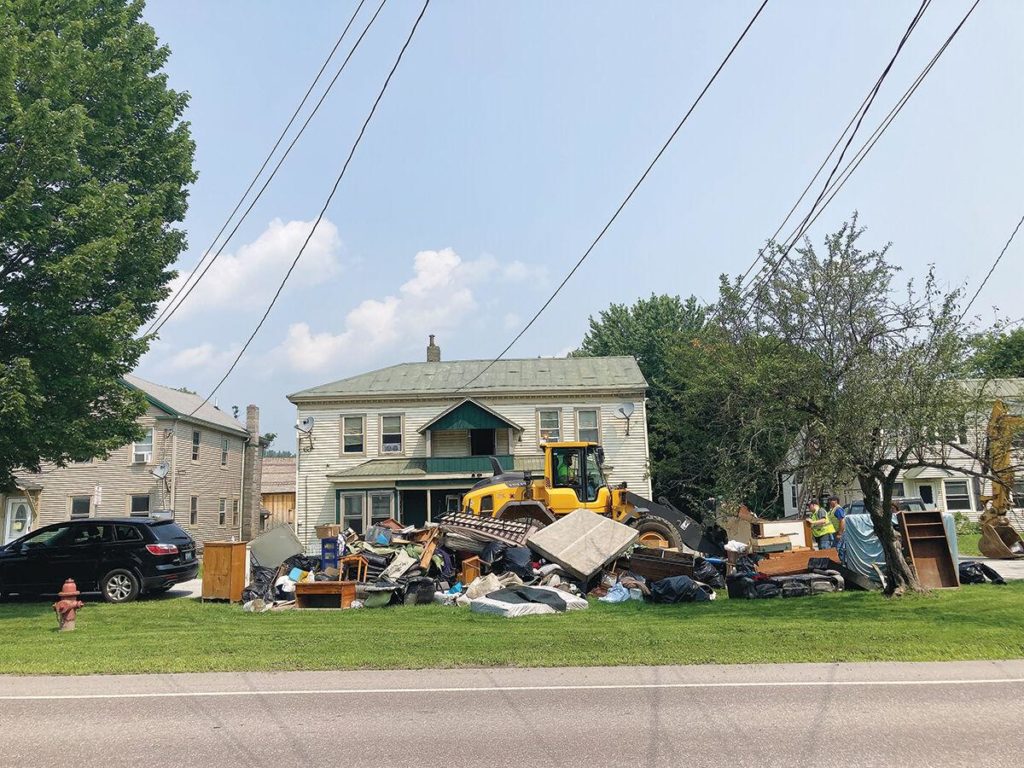
The unexpected response of some friends during the July flooding in northern Vermont left a lasting impression: “We wanted to help get food to your animals, but didn’t have a raft.”
At that time, my wife and I were in New Hampshire, and as I read about the floods in a digital newspaper, the images of our capital city, Montpelier, under several feet of river water and subsequent drone pictures appearing of our village similarly submerged were hard to believe. Overnight, so much water had risen that local businesses and homes were identifiable only by their roof and upper building sections.
We were fortunate: the waters receded in a few days, leaving our menagerie of house pets hungry but unharmed. The village had begun to rebuild. Images of muddy streets and moldy walls replaced the lapping, dirty river inundation, with piles of discarded house building materials, appliances, car parts, and ruined personal items like toys, pillows, books, and albums littering walkways and front yards. A nearby nearly destroyed house had a large handmade banner, “We Need FEMA!” and a number to call nailed to its clapboards. The rivers had risen as high as eight feet overnight; the degree of devastation was not predicted. It was something most of us woke up to.
The flood, its magnitude considered a ‘hundred year’ storm, followed the previous hundred-year storm, Irene, by 11 years. This is the new climate change calculus, the ‘new abnormal’, where climate disruption skews previous estimates and predictions of weather events to a thoroughly unsettling, and increasingly traumatic degree.
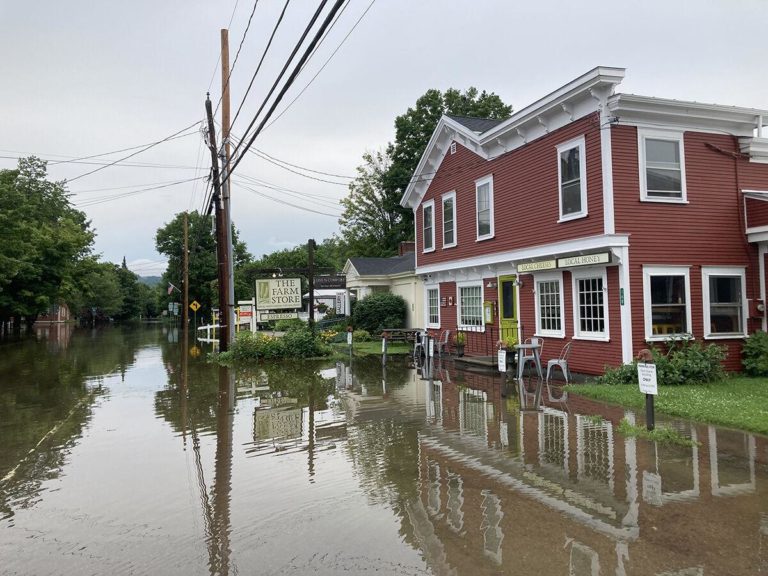
Many thoughts have come to me since July. The close proximity of losing everything in a moment does bring an emotional immediacy connecting more viscerally to catastrophes around the globe.
Climate change, when it hits home, can no longer be an abstraction. Around the same time of the Vermont deluge, Libya was pummeled by the storm Daniel; Greece had historic wildfires; and Lahaina, a town on Maui, Hawai’i, was incinerated. I can ‘feel’ these calamities in a personal way.
But further reflection shows that the initial images of these disasters, while powerful and impactful, capture a comparably brief and strangely superficial aspect of our human-generated calamities.
A longer timeline of suffering and disarrangement occurs that we rarely consider or document. The widening plexus of these crises is, for the most part, invisible, making it difficult to conceive and less susceptible to our traditional methods of news gathering. An unnerving viewing of, but quickly subsiding attention to, these disasters can induce a complacency that lulls us into believing we have sufficient knowledge of these shocks and tribulations and can ‘move on’ to other arresting, short-term, and deceptively ephemeral circumstances that bedevil us. In so thinking, we let slip a more elusive tragedy.
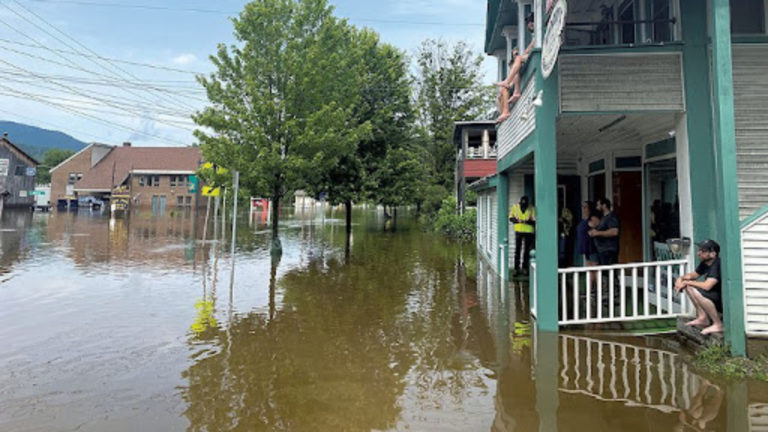
Consider more rigorously and accurately the depth and import of a local flood. As the pictures in this essay show, the world of my village and its nearby towns were, for about two days, unrecognizable except by architectural fragments and a mental residential map. After about 48 hours, the waters receded and the reporters also left. Cobbled from various sources, the following schematic list entails a kind of existential atlas of elements that afflict us when the smart phones are pocketed and the flood a fading trace of parched brown silt about 5 feet up along a building’s outer walls.
In all of the variegated elements described here, less advantaged people, those who have lower income, have limited access to health care and other public services, and whose dwelling typically lies within a flood plain, suffer the most. Injustice washes across the land with and beyond the rising river breach, and can be found between every word in this essay.
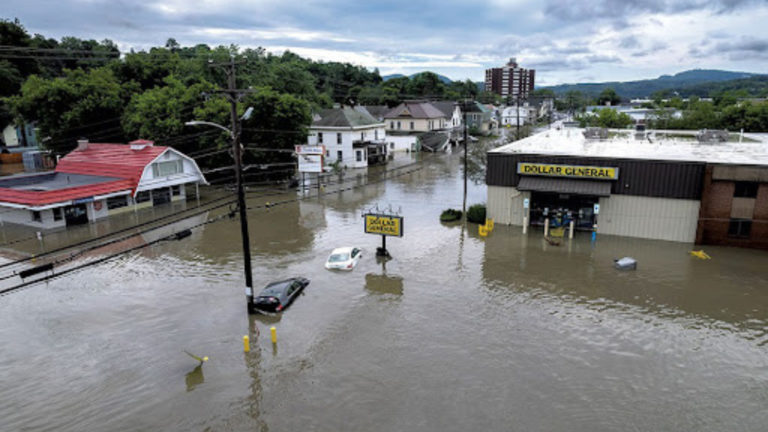
These represent the more immediate physical consequences that our eyes and cameras can detect. While the floodwaters are destructive, mud and mold can contribute to more substantive and lasting damage. Mud clogs pipes and sewers, holds moisture, and rots wood and other permeable materials. Mold similarly spreads rapidly in these damp conditions, quickly ruining wooden structures, drywall, and ceilings. The flood that affected my community happened in July, during the peak of summer, and mold quickly became a pervasive and damaging presence.
This is another more easily visualized consequence of a flooding disaster. The surging waters pick up river and land snakes in their wake, carrying them into our habitat. Rats and mice are similarly relocated and take up residence in damaged homes and businesses. Insects can proliferate as well: the increase in mosquitoes in Vermont was palpable, as it often is in other parts of the world when the disruptive force strikes in the warmer months. Such pestilence confounds recovery efforts, and the presence of dislocated vermin can persist well past the phases of restoration.
Proceeding through the layers in this descriptive atlas, the following categories have meager physical manifestation and are difficult to apprehend through our senses or our visualizing technologies. They nonetheless profoundly affect our human condition and thereby our humanity.
This system of remediation primarily addresses the built environment and means of restoring it. There are social aspects to the assistance, covering some medical coverage and childcare, but it is primarily meant to rebuild and return function to the material infrastructure; the social services are usually short term.
Mold brings spores and other microbial life forms into homes. These spores can be deadly, especially to people who have prior respiratory problems and immune issues. The spores are difficult to eradicate and can thrive on just about any surface. Breathing difficulties, which can lead to compromised circulatory problems and affect the heart, are common in the aftermath of severe flooding.
Our biological system should be considered another element, or ‘map’ in the atlas of a damaging flood. It can be compromised in many different ways.
Human Biology
A friend of mine had to swim frantically to save his life when the river across the street from his home surged and poured into his living room. Aside from the immediate physical threat to life, the stress of a flood can be deadly as well. The months following a deluge can cause stress disorder, sleeplessness, and ongoing anxiety related to uncertainty, loss of property and home, and loss of livelihood. Someone with weakened lungs and breathing function prior to a flood can, as noted above, more readily incur further loss of functionality that can lead to less mobility, concentration, and ability to work. Job loss is a consequence of flooding, especially among those who barely make ends meet and labor under conditions that lead to layoffs when even a few days of work are missed.
Insurance Challenges
Health insurance and home insurance pose significant challenges. Health insurance may not cover exacerbated health issues resulting from the flood, and certain medications may become unavailable.
Not all homesteads affected by the July floodwaters were covered for water damage in their insurance policies. Some policyholders were unaware that their contract excluded coverage for flooding, while others were surprised to discover that their property was designated as residing in a floodplain and thereby subject to lower, or no, compensation.
In the aftermath of the flood, insurance companies typically review and reassess policyholder contracts. Many ongoing cases reveal that the risk associated with insuring a specific property is considered high, leading to a significant increase in insurance premiums – often doubling or tripling for future coverage. Consequently, this surge in premiums can transform a once-affordable home, previously covered under the original rates, into a financial burden for the owner. As a result, they are forced to sell their home and seek a new residence that is affordable to insure.
Social Connections
In the more severe circumstances, a family is displaced after losing their home and, finding it difficult to afford another place to live, becomes homeless and relies on the state for assistance. In Vermont, this often means relocation to motels that the state has purchased. However lengthy the disruption, the sudden loss of place and the social connections of friends and local services in the village or town can lead to a highly stressful disorientation as the familiar, reliable, and predictable support networks are left behind.
Erosion of Personal identity
At the level of greatest hardship, a sense of self and purpose can be destroyed, a kind of destruction that mirrors the physical ruin of a flood but is far more lasting and insidious. A family upended, loss of work, uncertainty of income and healthcare: these instances were relatively few in my region, but the population is small. Consider the fate of those who have been displaced as representative of what is passing and to come around the world. The Vermont storm was certainly more violent and destructive because of climate change. Globally, climate-powered superstorms, massive inundations, loss of seacoast and shorelines, and rivers that increase tenfold in volume overnight will contribute to the diaspora of hundreds of millions of people in the coming decades. Our New England calamity was a fractal of a vast geometry of collapse that will redefine us as a species.
Coda
So much of our humanity is invisible, difficult to capture through our various media, often constructed on abstraction (monetary valuation, insurance calculations, benefits, actuarial tables, trust). Manifestations of our needs and desires can be elliptical or deeply internalized, or play out over long time periods not susceptible to brief candles of technical illumination, sound bytes, or fleeting ‘likes’
We need to perceive and understand these more complex contexts and existential circumstances if we are to grasp the true impact on our altered world and our place in it. The popular snapshots that pervade our screens and printed sources—of fire and water, rubbled earth and tempest-knuckled wind– are fragments of what can be called the bigger picture, but it is not so much a picture as a living weave of forces and affordances, some good, some dire. Fragments mislead in that they lure us to complacency and satisfaction of knowing about, but not knowing ‘through’ the catastrophes that beset us.
The waters of July have reabsorbed into the fields and streams and forests of my surround. Charts have begun to appear, the graphs of water tables, wind and rain; the damage done; the costs of reconstruction; and the preparations for a likely troubled future. And fragments of a contrived epilogue : pictures of a home restored, a porch with painted chairs, a sign ‘Open Again’ on storefronts only recently submerged.
How we choose to see will determine our fate. Voices that must be heard are stilled; the honest measure of our losses uncalculated; and the stories of those who suffer most, and of those who disappear, so integral to our shared humanity, too often seep without effort into the earth like a midsummer rain.
Charles Henry is the president of the Council on Library and Information Resources (CLIR).

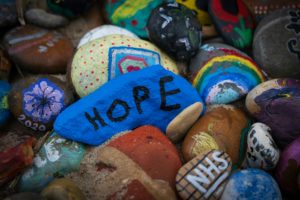

Council on Library and Information Resources
1800 Diagonal Road, Suite 600
Alexandria, VA 22314
contact@clir.org
CLIR is an independent, nonprofit organization that forges strategies to enhance research, teaching, and learning environments in collaboration with libraries, cultural institutions, and communities of higher learning.
Unless otherwise indicated, content on this site is available for re-use under CC BY-SA 4.0 License